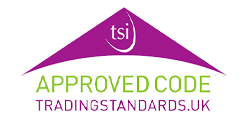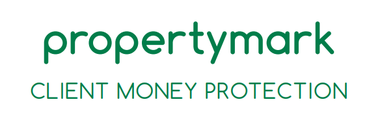Tenant’s Moving Out Checklist

So, it’s time to move on! You’ve reached the end of your tenancy and are starting to think about what you need to organise before you move out. To minimise the stress, we’ve put together a checklist to help ensure you don’t miss anything important.
1. Pull together all the documents relating to your tenancy.
If you haven’t done so already, pull together all the documents relating to your tenancy including:
- your tenancy agreement (or any renewals to it)
- details of your deposit protection scheme
- your ‘move-in’ inventory report
- a copy of the EPC and Gas Safety Certificate for the property
- receipts of your rental payments
- receipts of payments you have made for utilities
- details of your contents insurance
- copies of all contracts with utility companies, phone, TV and internet companies
Make sure you review these carefully and follow the correct procedures for cancelling any agreements.
2. Settle any outstanding bills
- Unpaid Rent is the most common reason for tenants losing their deposit, so it’s worth checking with your landlord or letting agent, before you move out, to make sure you’ve paid the correct amount.
- Contact your utility suppliers, before you move out, so that they can organise a final bill. Make a note of your meter reading on the final day for reference should you be billed an incorrect amount.
- Contact any service providers such as TV, Internet etc. that you will be moving house. So they can also arrange final bills.
- Arrange to have your mail re-directed to your new address with the Post Office.
3. Inspect your property and ensure it is returned to the same standard that it was when you moved in
Landlords will want to ensure the property is ready for the next tenant, and it’s likely to be your responsibility to return it to the same condition as when you moved in. You will need to clean every nook and cranny before you move out. If the property isn’t spotless, you could lose some of your deposit to a cleaning bill.
- Check your deposit is protected under a deposit protection scheme
- Inspect the property vs the ‘move-in’ inventory
- Clean and repair where it is your responsibility to do so.
- Make sure the garden is also in the same condition as when you moved in. Pull up any weeds, mow the grass and dispose of garden waste. If the gardening tools belong to the landlord, ensure you leave them behind for the next tenant.
- Make a list of all damages and deterioration
- Check which items are deductible from your deposit and which are the responsibility of your landlord
Plan ahead before you move out
In the weeks before you move out, there’s plenty you can do to make the process as stress free as possible.
- Purge your belongings and de-clutter. Only keep what you plan to take to your new property.
- Contact your landlord to notify them that you want to end your tenancy and to agree your move-out date
- Negotiate any terms regarding the ending of the tenancy
- Remedy any problems that you have identified through your inspection
- Notify organisations that need to be aware of your new address including:
- Your letting agent
- Your local council to end / set up your Council tax
- Your utilities provider: electricity supplier, gas supplier, water supplier
- Your landline / Mobile phone / Internet / TV provider
- DVLA
- HMRC
- Your employer
- Your bank, building society, credit card companies
- Your Insurance provider
- Your pension provider
- Schools, colleges or universities that you or your children attend
- Your doctor, dentist, optician, veterinary practice
- Your friends and family
- Other subscriptions that use this address
- Start packing and decide how you plan to remove all your personal belongings (hire a van, a removal company etc). Label all your boxes, to make it easy to find things when unpacking in your new property.
- Pack a ‘day bag’ with everything you might need on your moving day, including tea bags, food for the day (for you, your children and any pets), phone charger and towels, toiletries and night clothes for your first night.
- Before you move ensure the property is immaculately clean and capable of passing the final inspection. Don’t underestimate the work involved in this; cleaning is the leading cause for disputes over tenancy deposits.
- Contact your utility providers at least 48 hours in advance of you moving out
On the day of moving
- On the day you move out, make a final check of the property and, if possible arrange a final inspection with your landlord / letting agent
- Take readings of all gas, electricity and water meters and photograph them for proof
- Ensure all main valves (gas, water) are shut, including the main power switch at the fuse box
- Ensure all appliances are shut and unplugged
- Photograph the property and all areas you can think of, to serve as proof of the move out condition
- Ensure all windows and doors are closed and locked.
- Return your old keys to your landlord or letting agent
- Collect your new keys from your landlord or letting agent
- Photograph your new rental property to document pre-moving condition
- Check the utilities are running safely including any smoke alarms.
- Request copies of the gas safety certificate, EPC, HMO licence, etc. to ensure your new landlord has met their responsibilities
After you’ve moved out
Where possible always go to the final inspection / inventory check with your ex-landlord or letting agent. If there are any cleaning issues, be prepared to arrange a cleaning company. Remind the landlord about your deposit and send a written notice or email to request that the deposit is returned.
Related Articles
Want to know how much your property is worth?
Elevating the Elmbridge property market
Visit us in Molesey
East Molesey
Surrey
KT8 9ER
VISIT US IN ESHER
Claygate
Esher
Surrey
KT10 0PD


